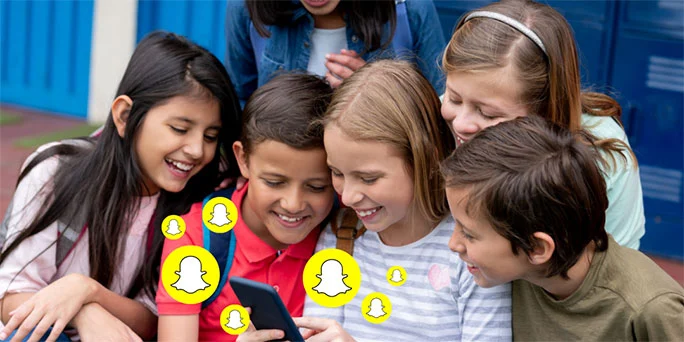
You may have noticed your kids obsessing over numbers lately. And no, they're not super into their math homework. The number on the top of many kids’ minds is their Snapchat Snapscore — a number seemingly insignificant to many parents that can nevertheless feel very important to their children. Read on to find out everything you ever wanted to know about Snapscores, including how Snapscores work and how they might be impacting your child’s mental health.
A Snapscore is a representation of how active a user is on the app. It’s a running tally of how often they use different functions within Snapchat, combined into one number. The more a person uses Snapchat, the higher their Snapscore. It’s essentially a ranking system designed to keep users engaged with the app that has taken on great social importance with many kids and young adults.
A user’s Snapscore is displayed at the top of their profile, represented by a light blue version of the Snapchat icon, a ghost known as Ghostface Chillah.
Snapchat keeps its Snapscore algorithm — a complex metric for gauging how much engagement a user generates — under wraps, but the basic equation is more engagement with the app equals a higher Snapscore.
Your child's Snapscore increases the more they're active in the app. Sending, receiving, and replying to Snaps (pictures), adding friends, and accumulating Snapchat streaks (how many days in a row Snaps are exchanged with the same friend) all drive up the number. Watching videos in the Discover section of Snapchat will also make your score go up.
Did you know? BrightCanary offers the best Snapchat monitoring for Apple devices. Keep tabs on all sent messages and chats on Snapchat, Discord, and every other app on your child's iPhone and iPad.
How often Snapscores update can vary anywhere from a few minutes to a few hours. Generally speaking, the more a person uses Snapchat, the more often they can expect their score to update.
Unfortunately, there’s no way to hide a Snapscore altogether. Your child can hide their Snap Score from specific people, but they must unfriend or block them on Snapchat and then adjust their settings to only display their profile to friends.
It’s not possible to disable a Snapscore. However, your child can set their profile so that only friends can view it, which will make their Snapscore invisible to non-friends.
Tap on the gear-shaped Settings icon, then scroll to the Who Can section. From there, select Contact Me and change their profile visibility to My Friends. (You'll want to do this step anyway — public profiles aren't safe for kids on social media.)
Ghost Mode will not hide your child's Snapscore — it only hides their location on the Snap Map. For privacy reasons, we recommend making sure your child has Ghost Mode enabled.
Arguably, the entire goal of Snapscores is to entice users to spend more time in the Snapchat app. After all, higher engagement drives a higher score. So, if screen time is a concern for you , it’s important to know that a drive to keep their Snapscore high could be keeping your kid on their device more than you would like.
Additionally, kids often compete with each other for higher Snapscores. They also serve as social feedback for kids — a higher Snapscore is seen as a measure of how well-liked someone is. Both of these factors can have an impact on a kid’s self-esteem and mood.
You can keep tabs on your child's well-being, as well as what they type on Snapchat, with BrightCanary. The app monitors everything your child sends, including texts, chats, and comments, across every app they use. Download today and get started for free.
Snapscores are a measure of how much a user interacts with Snapchat. The draw to constantly raise their Snapscore as well as the social currency associated with Snapscores can have an impact on children’s well-being. It’s important for parents to understand the complicated and important role social media plays in the modern landscape of their kids so they can help them navigate the potential pitfalls.